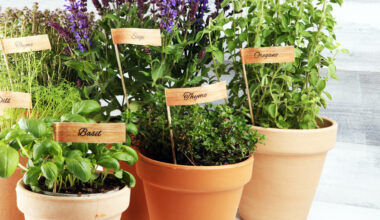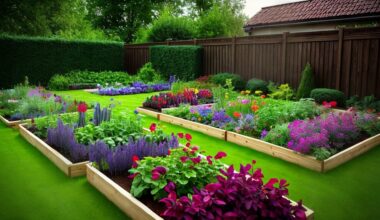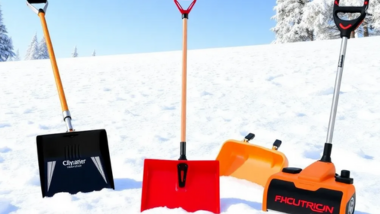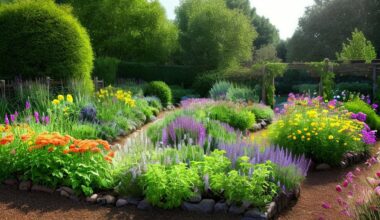A wild jumble of greenery, blossoming flowers, and a jubilant symphony of singing birds, the garden serves as our little piece of paradise. Among this haven, however, lurks a practicality that can cramp style – the drab drain. Now you’re left pondering if it’s doable to cover it up without upsetting its functionality.
But don’t fret! It turns out that hiding drains isn’t just permissible; explained properly it can also be an exciting venture teeming with creativity and charm on top of being effective!
So fasten your DIY belts because we’re about to embark on a journey down this rabbit hole called ‘drain-concealment’, where you’ll not only learn how but will delight in making your garden even more picturesque!
Assessing the Need to Cover a Garden Drain
When it comes to drains in your garden, covering them can be a wise decision. Not only does it prevent debris from clogging your drainage system, but it also helps maintain the overall aesthetics of your outdoor space.
However, before you cover up that drain, assess whether it is necessary. Is your garden prone to excessive rainfall or do you often find leaves and other debris blocking the drain? If so, then covering the drain is definitely worth considering.
Choosing the Right Material for Covering a Garden Drain
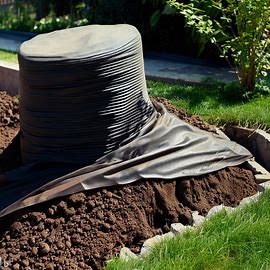
Now that you’ve determined that covering your garden drain is necessary, let’s talk about choosing the right material.
There are several options available depending on your budget and personal preference.
One popular choice is using grates made of durable materials such as stainless steel or plastic.
These grates not only provide protection for your drains but also allow water to flow freely through them.
Another option is using decorative covers made from materials like stone or concrete. These covers add an aesthetic touch to your garden while still serving their purpose of keeping out unwanted debris.
Procedure of Covering a Garden Drain Safely
Covering a garden drain may seem like a simple task, but safety should always come first. To ensure proper installation and minimize any potential risks, follow these steps:
Step 1: Clear any debris around the drain area.
Step 2: Measure the dimensions of the drain opening accurately.
Step 3: Choose an appropriate cover size based on measurements.
Step 4: Place the cover over the drain opening securely.
Step 5: Test if water flows through properly after installation.
Remember to wear protective gloves and eyewear when handling any tools during the installation process.
Aesthetics and Design Considerations When Covering a Drain
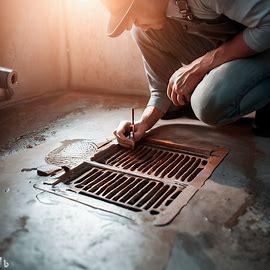
Covering your garden drain doesn’t mean sacrificing aesthetics. In fact, there are various design options available that can blend seamlessly with your outdoor space.
Consider factors such as the material, color, and style of the cover to ensure it complements your garden’s overall theme.
You can also opt for covers that mimic natural elements like rocks or pebbles.
These covers not only provide functionality but also enhance the visual appeal of your garden, if you have a more modern or minimalist aesthetic, sleek stainless steel grates might be the perfect fit.
Maintaining Accessibility to the Covered Drain
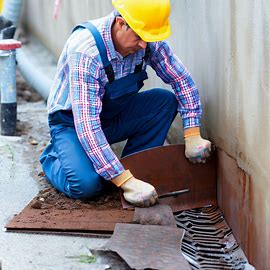
While covering your drain is essential for protection and aesthetics, it’s crucial to maintain accessibility in case any maintenance work is required.
Make sure you choose a cover that is easily removable when necessary so you can access the drain without hassle.
Consider using covers with hinge mechanisms or those that slide on rails for easy removal whenever needed.
This way, you won’t have to compromise on accessibility while still keeping your drains covered.
Incorporating Plant Life Around the Covered Drain
Just because you’ve covered your garden drain doesn’t mean you can’t incorporate plant life around it. In fact, the strategic placement of plants can further enhance both their appearance and functionality.
Consider planting decorative grasses or small flowering plants around the covered drain area. These plants will add pops of color and texture while also helping absorb excess water from heavy rains.
Additionally, climbing vines trained along nearby structures like trellises or fences can provide an attractive screen while ensuring proper drainage around the covered drain area.
Potential Issues and Solutions after Covering a Garden Drain
After covering a garden drain, it’s important to be aware of potential issues that may arise and how to address them. One common issue is the accumulation of debris on top of the drain cover, which can hinder water flow. Regular maintenance and cleaning are necessary to prevent such buildup.
Additionally, ensure that the covered drain doesn’t become a tripping hazard. If your garden sees heavy foot traffic, consider using covers with anti-slip features or installing warning signs to prevent accidents.
If you notice any issues with water flow after covering your drain, it may indicate a clog in your drainage system. In such cases, it’s recommended to seek professional help to diagnose and fix the problem effectively.
Conclusion
Covering a garden drain is not only practical but also adds an aesthetic touch to your outdoor space.
By choosing the right material, following proper installation procedures, and considering design elements and plant life around the covered drain area, you can create a functional yet visually appealing solution for maintaining outdoor drainage in your garden.



